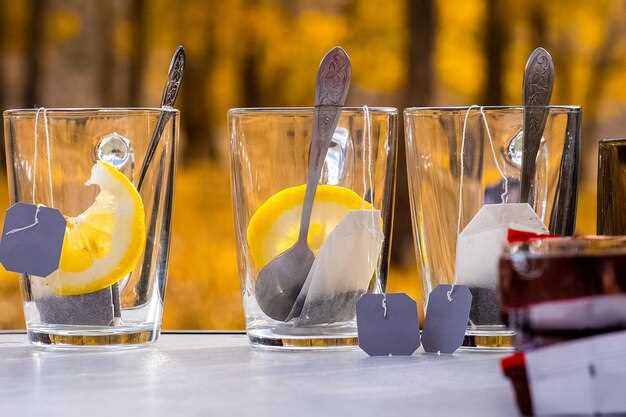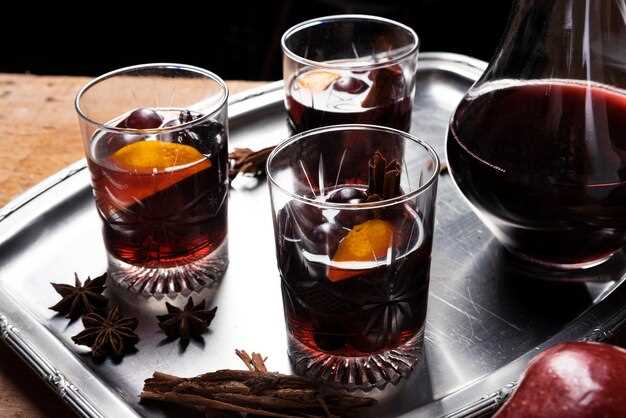Begin with a Negroni-inspired base: gin22ml per pour; vermouth rosso; bitter liqueur; a twist of citrus. This sharp start delivers a clean taste that guests enjoy during winter tastings.
Winter option: mulled wine with warm spices; cinnamon, cloves, orange zest; jasmine notes surface in aroma; vaud households prepare it without honey to keep the core taste pure.
Parts matter in the base set: 2 parts vermouth; 1 part gin22ml; 1 part bitter; chill glass to 6–8 C; garnish with citrus peel on saucer; cover the glass before serving. Among techniques, a whey foam adds light body, being light on sweetness; whey foam is often used in vaud-inspired pours.
There exists a vaud variant created by arvin, the name appearing in tasting notes; this profile scores the highest in winter tastings; its taste blends resinous juniper with jasmine hints; negroni base reappears with refined balance; others copy the approach using rye or barley base for texture.
Serving tip: chill saucers; set glass on a cover briefly; finish with citrus oils for aroma; this pretty presentation helps guests notice the taste more clearly.
Practical overview for enthusiasts and retailers
Stock a balanced set: Canton brandy; a line of gin22ml pours; a non-alcoholic option; gluhwein kits; petit bottles for tasting flights; a French-inspired cordial. Prioritize aroma profiles, taste notes, plus clear staff guidance for customers across seasons.
- Core assortment by canton origin: include one aged brandy from a key canton; label cards explain origin; national story; aroma profiles such as nutty, orchard fruit, spice.
- Gin22ml range: include a dry gin selection; highlight juniper, citrus, ginger aromatics; offer tonic pairing; provide a Martini style serve with dry vermouth for tasting flights.
- Non-alcoholic line: emphasize lighter summer profiles; ensure zero alcohol; market via summer refreshment; track feedback via QR code on bottle.
- Gluhwein and winter cues: market warm sips; add citrus peel; target ski season; ensure label shows origin; feature spice notes.
- Petit formats and pricing strategy: display petit bottles in price tiers; enable tasting flights; test consumer response; monitor consumption rate for restocking cadence.
Serving ideas for enthusiasts:
- Gin22ml with tonic: pour 22ml gin22ml; top with tonic; garnish with lemon twist; serve cold; emphasize aroma; highlight ginger notes when present.
- Martini style riff: gin22ml; dry vermouth; shake or stir; chill glass; garnish with lemon twist.
- Winter warmer: warm gluhwein to a comfortable mug temperature; mix with a dash of orange peel; offer cinnamon stick as a garnish; present a simple heat method for staff guidance.
- Non-alcoholic sipper: pour over ice; finish with sparkling water; introduce ginger accent; serve as a summer cooler; emphasize aroma profile throughout the glass.
Retailer resources:
- LinkedIn storytelling: publish a concise origin story; highlight canton origin; include tasting notes; attach staff guide for customer questions.
- Shelf education: write short tasting cards; include aroma descriptors; provide a quick flight setup: Canton brandy, gin22ml, non-alcoholic option; keep signage bilingual for local markets.
- Pricing and promotions: bundle options for seasonal displays; test mid range versus premium tiers; rotate displays to maintain visibility of the range.
Altitude Alpine Dry Gin 43: key botanicals, ABV, and distillation notes
Recommendation: enjoy this alpine spirits profile long with a premium tonic; pour 50 ml into a tall glass; fill with 120 ml tonic; stir lightly; a lemon twist lifts the citrus; opened bottle keeps best with a tight cover; content remains vibrant for weeks when stored cool.
- Bottle size: 70cl long
- ABV: 43%
- Ingredients (key botanicals): juniper; alpine citrus peel; gentian root; peppermint; ginger; röteli; black pepper; citrus oil; pine resin
- Distillation notes: copper pot still; two-pass distillation; heart cut preserved for a clean core; minimal heads tail separation
- Flavor profile: crisp juniper baseline; citrus brightness; alpine herbs; gentle bitterness from gentian; peppery warmth from ginger; a touch of peppermint; long dry finish
- Serving concepts: long with tonic; garnish with citrus oils; stir briefly; use a large ice cube for slow dilution
- Non-alcoholic option: mix with soda water; juice15ml of lemon juice to brighten; serve at room temperature when preferred
- Pairing ideas: Italian Starlino liqueur for a spritz-like mix; Rivella content elevates a low-ABV serve; röteli works as a botanical accent; a splash of apfelwein adds tart depth
- Notes for storage: opened bottle should be covered; keep away from light; use within a few weeks for best aroma
- Community notes: taste profiles discussed on facebook amplify the alpine brightness
- Context: five primary aroma notes emerge during sniff; mixture showcases what makes this spirit distinct, content worthy of a long-drink ritual
Altitude Alpine Strawberry Pink Gin 40: tasting profile and ideal serving occasions
Chilled to 6–8°C; serve Altitude Alpine Strawberry Pink Gin 40 in a tall glass; tonic; grapefruit twist; a sprig of local herbs.
First sip delivers bright Alpine strawberry; delicate citrus; herbal lift; a hint of chocolate; walnut-flavored depth; subtle spices.
Origin lies in switzerlands Vaud region, set among mountains; aroma blends berry sweetness, herbs, grapefruit zest; mid-palate includes syrup sweetness from local sources; finish is dry, with lingering spice.
Ideal occasions include brunch spreads; spritz-style aperitifs; sparkling moments in mountains; tasting with liqueurs; cheese plates from local producers in the Vaud region; selection on shelves across switzerlands mountain towns.
Their brunch spreads benefit from this bright note.
Could pair with beers in casual tasting sessions; this selection favors brunch tables.
| Aspect | Notes |
|---|---|
| Aroma | Bright Alpine strawberry; grapefruit zest; herbs |
| Palate | Fruit, chocolate; walnut-flavored depth; subtle spices; syrup lift |
| Finish | Dry; lingering herbal tones, citrus hints |
Serving Dry Gin 43: glassware, temperature, and garnish ideas
Pour gin22ml into a pre-chilled Martini glass at 6 degrees Celsius; top with a splash of tonic if preferred; garnish with a lemon twist for aroma.
Opt for glassware that concentrates aroma: a Martini glass (V-shaped) or a coupe with a broad rim. For visual contrast, present a second portion in a Nick & Nora or a small lowball, showcasing clarity. Here comes another approach.
Target temperature 4–7 degrees Celsius; 4 degrees yields crisper citrus; 7 degrees releases warmer botanicals. Although some guests skip adornments, this approach yields more aroma. The highest perfume sits at the rim; holdrio swirl briefly to release a sussmost aroma; pre-chill the glass to holdrio oils in the first sips.
Garnish ideas include a clean lemon twist to release oils; a single cherry on a pick; a thin orange peel resting on the rim. For a more aromatic lift, embed fragments from silvaner grapes; introduce a micro sprig of flumli for a subtle resin note; apply a gluhwein glaze on the rim to evoke winter warmth; use a holdrio swirl to cling oils to the glass, boosting the highest perfume in first sips. If preference leans lighter, swap tonic for a splash of soda; today’s versions stay crisp within a small coupe. For variety, explore another approach using cherry, lemon, or orange peel; each version keeps gin22ml as the clear hero of the course.
Here today, favourite selections lean toward a crisp Martini style; Italian influence informs the approach; another option surfaces with a lighter tonic presence; today’s options showcase versatility for a quick tasting course; the century-long preference for citrus remains clear; the highest aroma arrives before the first sip; gluhwein glaze on the rim adds warmth for wintry sessions; the story behind the pour stays vivid for serious tasters.
Swiss cocktail ideas with Alpine gins: practical recipes and ratios

First, gin22ml, rosehip 15ml, apfelwein 18ml, jasmine 1 drop, a splash of lemon juice; strain into a chilled glass; this balance feels refreshing yet warming.
These ratios yield a light, popular spritz: gin22ml, rosehip liqueur 15ml, apfelwein 20ml, sparkling water 40ml; pour over ice, garnish with jasmine.
Today this warming riff translates into a mug version reflecting local alps: gin22ml, gluhwein reduction 20ml, apfelwein 8ml, jasmine aroma 2 drops; jägertee infusion 30ml; a squeeze of lemon; aromas from alps.
Herbal riff for home evenings: gin22ml, jasmine 6 drops, rosehip 12ml, apfelwein 15ml, tea water 40ml; shake gently, strain into a chilled glass opened with a lemon twist; lutz sugar rim.
Teas shown here include jägertee; light, refreshing notes arise from jasmine, rosehip, fruit; gin22ml remains a flexible base; arvin liqueur adds depth; источник points to arvin, never overpowering.
Packaging, storage, and purchasing tips for 6 x 70cl cases

Recommendation: select 6 x 70cl cases featuring reinforced outer carton, interior dividers; bottles stay secure during transit.
Typical footprint: about 60 cm L x 40 cm W x 25 cm H; weight per case around 9–11 kg; pallet footprint roughly 1.0 m x 1.2 m; forklift entry on both sides.
Store upright; maintain temperature 12–15°C; avoid direct sun; keep away from heat sources; humidity around 60–70%; rotate stock with FIFO; aged liqueurs prefer cooler conditions; non-alcoholic versions should sit in a dark, steady environment.
Purchasing steps: call supplier before shipment to confirm stock; request a photo checklist showing 6 x 70cl cases; verify bottling date; inspect case integrity on arrival; confirm shipping terms; compare prices plus bulk break options; choose a favourite bottling with stable availability.
Something to note: fruit liqueurs with light sweetness stand out; some options use grapes or strawberries from alpine orchards.
juice25ml samples help when comparing aroma and texture; pour from a sample glass after chilling.
If seeking non-alcoholic choices, check labels for non-alcoholic to match normal shelf life.
Chamonix mood could inform purchasing notes; through mountain routes, suppliers deliver to clinics, retailers.
Click to confirm stock; call before final order; basically, you should review packaging quality. Time spent on inspection saves returns.
Although some items age gracefully, should stay in green cartons to reduce light exposure.
Cover price includes VAT; however, consider total landed cost when comparing suppliers.
Fairy light exposure declines if packaging includes UV protection; cover bottles with dark glass or outer wrap.
Whey-based cream liqueurs require cooler storage; check allergen labels.
Routes through alps ensure steady supply channels; Chamonix hubs maintain reliable time-sensitive deliveries.